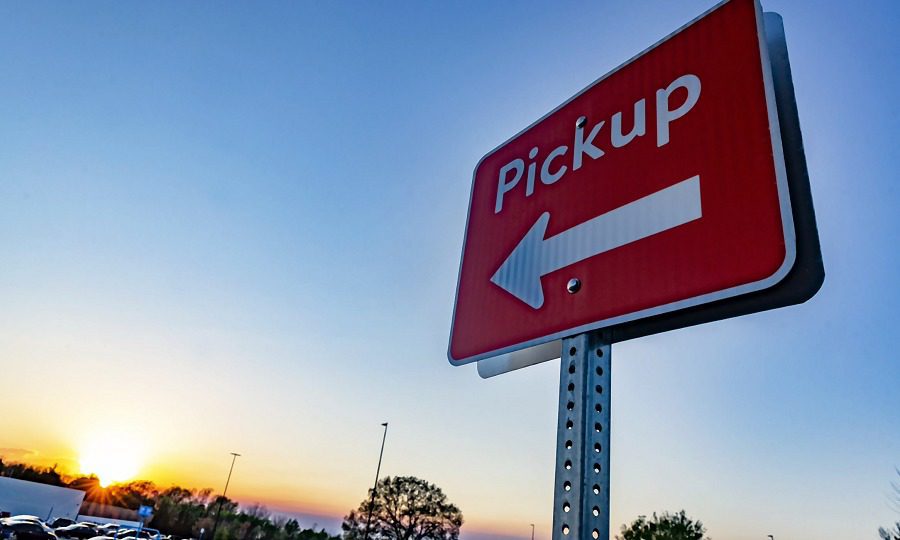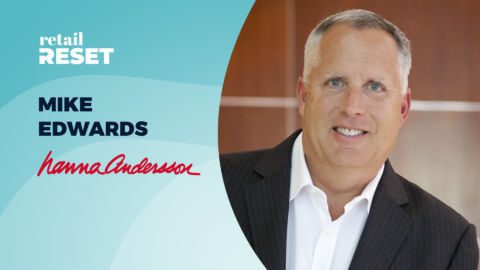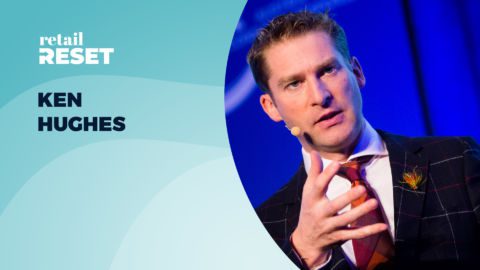To prevent the spread of COVID-19, consumers and retailers are changing the way they interact both inside and outside brick-and-mortar stores, as many retailers modify curbside pickup to be “contactless” or “contact-free.” Similar “no-hands” models are being used for some home deliveries as a means to address shopper concerns.
While curbside pickup is not a new service, its initial marketing emphasized speed and convenience, while the contact-free variation is designed to reduce the possibility of transmitting infection. The transaction is contactless because payment is made online or in an app, and the customers’ orders are loaded directly into their trunks or backseats to maintain physical separation from store employees.
During the first weeks of the pandemic, contact-free pickup was quickly implemented by many retailers that hadn’t previously offered it, including Bed Bath & Beyond’s Harmon Stores, DICK’S Sporting Goods, Michaels and Petsmart. Others expanded the number of their stores offering curbside and/or waived previous fees that were charged for the service, including Home Depot, Giant Eagle and Barnes & Noble.
While the surge in contact-free pickup and delivery offerings has been tied to the current pandemic, it’s likely that their popularity will remain even after the crisis passes. Many retailers will need to figure out ways to incorporate these offerings on a regular basis while still keeping a tight rein on additional labor, operational and systems integration costs. Other long-term changes will include:
- Although consumers will be less focused on cleanliness and hygiene once a treatment and/or vaccine is available for COVID-19, they will continue to be concerned;
- Many retailers will continue to offer contactless pickup even after the pandemic fades — and some might be able to charge for it as a way to balance their costs;
- Many internal barriers that made curbside delivery difficult to execute have come down, giving retailers a firmer operational base for developing the service; and
- With the contact-free concept becoming more urgent, retailers and solution providers are likely to accelerate their development and adoption of other contactless forms of delivery that recently seemed futuristic, including robots, autonomous vehicles and drones.
65% Of Consumers Call Home Delivery The Safest Current Shopping Option
Contact-free delivery, which includes to-the-door delivery as well as curbside pickup, has been critical to brick-and-mortar retailers’ efforts to retain customers, because many consumers believe online shopping is less risky than leaving home and encountering other people in stores. In a recent CommerceHub Consumer Survey, 65% of respondents agreed that home delivery is the safest shopping option during the pandemic.
“All customers have an increased awareness and sensitivity to the critical importance of safety and hygiene,” said Joshua Swartz, Partner in the Digital Transformation practice of Kearney. “Until a vaccine or cure is developed, retailers must take extra steps to protect their customers. After that point, it will not be as important or necessary – though it will not disappear.”
“Contactless delivery has become a vital lifeline in retail commerce,” observed Matt Katz, Managing Partner at SSA & Company. He expects shoppers will continue to be interested in the service in the post-COVID-19 future. “Many of the new consumer behaviors that have taken hold over this pandemic could well stick, particularly those around hygiene,” Katz said.
This prediction is backed up by CommerceHub’s survey of 1,500 consumers. The majority (59%) said they are more likely to use curbside pickup following the coronavirus outbreak.
“This is the new norm,” said Sean Maharaj, Managing Directorat AArete. “Consumers are strongly associating contactless and curbside delivery with health benefits and/or reduced risk. Based on our observations and the way data is trending, we anticipate that nearly all retailers that have introduced curbside/contactless service will retain it. Indeed, labeling that indicates a product has been moved from origin to destination contact-free may remain a key selling point going forward. It sends out the right messages regarding trustworthiness in terms of customer and worker protections.”
Crisis Breaks Down Internal Resistance
Nick Kramer, VP/Practice Leader for Digital Transformation and Advanced Analytics at SSA & Company, noted that retailers had been gradually adopting curbside pickup and buy online/pick up in-store (BOPIS) prior to COVID-19, although “this trend was growing at a slower pace than expected.”
A year ago, a survey by Offers.com showed that only about 20% of American adults had tried curbside grocery pickup, with 39% of those having used Walmart’s Pickup curbside delivery service. With close to 3,200 Pickup locations at the end of its fiscal year on January 31, 2020, Walmart has a strong lead over Target — its curbside pickup had been tried by 15% of the 2,000 U.S. adults surveyed by Offers.com. Target’s Drive Up service is available in more than 1,100 stores.
However, it hasn’t been lack of interest from consumers that hampered adoption, according to Kramer. Rather, many retailers were reluctant to invest in curbside pickup because of the costs and logistical challenges involved. “The disruption of COVID-19 eliminated the largely self-inflicted internal complexity that let internal teams, from IT to merchandisers, believe it couldn’t be done,” he said. “Suddenly, when it became a matter of survival, operating models dynamically realigned themselves around speed and execution, and seemingly insurmountable obstacles disappeared.”
Now that many retailers have reinvented their processes to deliver contactless pickup, Kramer doesn’t expect them to slide all the way back. “Retailers are meeting a pent-up demand that won’t diminish even when fears of COVID-19 infection are safely behind us,” he said.
Questions remain, however, about whether shoppers will be willing to pay for these services. While Walmart and Target’s curbside pickup offerings have been free, many supermarket chains charged a nominal fee for curbside pickup until they waived it during the pandemic. According to Kearney’s Swartz, retailers might be able to charge for contactless curbside pickup again post-COVID-19. “Some customers will still expect this, and we’re predicting that they will happily pay a premium for it,” he said.
AArete’s Maharaj isn’t so sure. “Given the current economic conditions, it will be hard for retailers to charge for a service that many are willing to provide free,” he said. “We’re expecting this to be another cost for retailers to absorb.”
The ‘Contact-Free’ Future Is Coming Fast
Parking lot pickup and contactless delivery of e-Commerce orders are entry points to a future for contact-free delivery that is more varied and technologically advanced.
In an interview with Retail TouchPoints, Kyle Rees, Director, Team Manager at Gartner, said, “I would like to imagine that these technologies are included in the mix for contactless fulfillment, because I think it’s a very obvious solution for decreasing the number of human hands touching a product before it gets to the consumer’s front door.”
The need to maintain social distancing during COVID-19, especially for the senior-age population, was the impetus for CVS Health and UPS Flight Forward to team up to use drones for part of the journey from local pharmacies to the homes of residents of The Villages retirement community in central Florida. The drones will deliver prescriptions to a location near The Villages, where they will be transferred to a truck for home deliveries.
“Now more than ever, it’s important that our customers have access to their prescriptions,” said Jon Roberts, EVP and COO of CVS Health in a statement. “In addition to our in-store pickup, free delivery services and drive-through pickup, this drone delivery service provides an innovative method to reach some of our customers.”
Reuters reported that several companies, including General Motors’ Cruise and Toyota-backed Pony.ai, have been using autonomous delivery vehicles during COVID-19 to provide free emergency services for food banks, shelters and seniors in need. Even though they are not making money per se, the companies are gathering data and experience while demonstrating how the vehicles can be safely operated.
While robots have not been deployed in large numbers for contact-free deliveries, college campuses and small cities in the U.S. and large Chinese cities have tested robot deliveries. In Bowling Green, Ohio, for example, the robots that had been doing on-campus deliveries at Bowling Green University ventured into nearby neighborhoods during the COVID-19 shutdown. “There has been some drone and robot delivery in China while people were locked down,” observed John Harmon, CFA, Senior Analyst at Coresight Research. “I’ve seen some tests in the UK. I think it’s an option for people completely locked down, but I think city streets have too many obstacles for these robots to be practical.”













